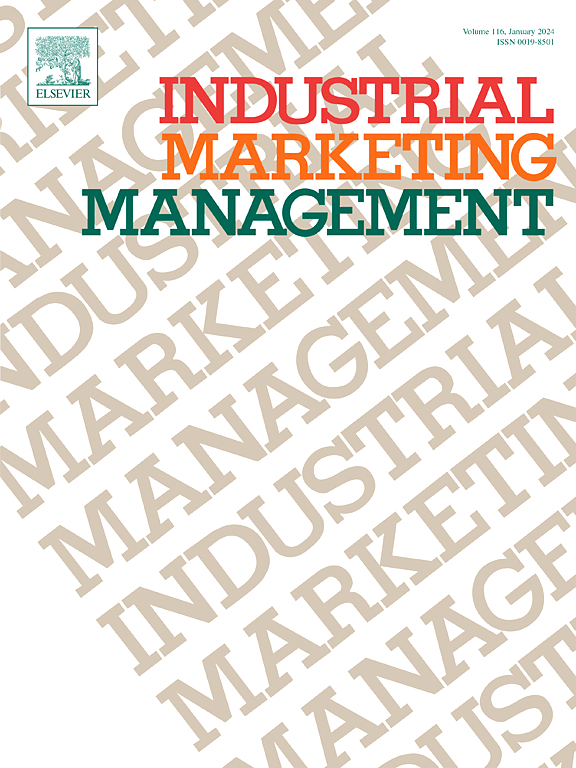商业市场中的广告——模糊的底线效应和对适当分析的需求
IF 7.5
1区 管理学
Q1 BUSINESS
引用次数: 0
摘要
在商业市场中,广告被认为对实现业绩目标越来越重要。因此,企业对企业(B2B)的营销人员经常被要求对他们的广告费用的直接回报负责。然而,直接依赖广告与盈利能力之间的联系可能会产生误导,并最终损害公司业绩。本研究整合了营销盈利链和能力-动机-机会框架的概念进展,以及B2B环境的独特特征,以解释为什么考虑(a)领先-滞后结构,(b)特质因素和(c)非线性效应在商业市场中对正确确定关系尤为重要。通过对1348家B2B公司十年(2010年至2020年)的大型数据集的观察,结果表明,当使用常见的分析技术时,错误的广告似乎损害了盈利能力。考虑到滞后效应、非线性效应,以及竞争强度和公司广告能力等特殊因素的影响,而不是他们的提供类型(商品与服务),使这种关系变得更加积极,这一研究表明,这是商业市场中广告支出与盈利能力之间的真正关系。这里提出的概念讨论、方法和发现为企业营销研究人员和管理者提供了有价值的见解。本文章由计算机程序翻译,如有差异,请以英文原文为准。
Advertising in business markets – The obscured bottom-line effect and need for appropriate analytics
In business markets, advertising is believed to be increasingly important to achieve performance goals. Accordingly, business-to-business (B2B) marketers are frequently held accountable for the direct returns on their advertising expenses. Yet relying on a direct advertising-profitability association can be misleading and eventually harm firm performance. This research integrates conceptual advancements in the marketing profitability chain and the ability-motivation-opportunity frameworks, as well as the distinct characteristics of the B2B context, to explain why consideration of (a) lead-lag structure, (b) idiosyncratic factors, and (c) nonlinear effects is especially critical in business markets to properly determine the relationship. Using a large dataset of 1348 B2B firms observed over a decade (2010 to 2020), the results show that advertising erroneously appears to hurt profitability when common analytical techniques are used. Consideration of lagged effects, nonlinear effects, and effects from idiosyncratic factors such as competitive intensity and firms' advertising capability, but not their offering type (goods versus services), turns the relationship more positive, which this study shows is the true relationship between advertising spending and profitability in business markets. The conceptual discussion, methodologies, and findings presented here offer valuable insights for business marketing researchers and managers.
求助全文
通过发布文献求助,成功后即可免费获取论文全文。
去求助
来源期刊

Industrial Marketing Management
Multiple-
CiteScore
17.30
自引率
20.40%
发文量
255
期刊介绍:
Industrial Marketing Management delivers theoretical, empirical, and case-based research tailored to the requirements of marketing scholars and practitioners engaged in industrial and business-to-business markets. With an editorial review board comprising prominent international scholars and practitioners, the journal ensures a harmonious blend of theory and practical applications in all articles. Scholars from North America, Europe, Australia/New Zealand, Asia, and various global regions contribute the latest findings to enhance the effectiveness and efficiency of industrial markets. This holistic approach keeps readers informed with the most timely data and contemporary insights essential for informed marketing decisions and strategies in global industrial and business-to-business markets.
 求助内容:
求助内容: 应助结果提醒方式:
应助结果提醒方式:


